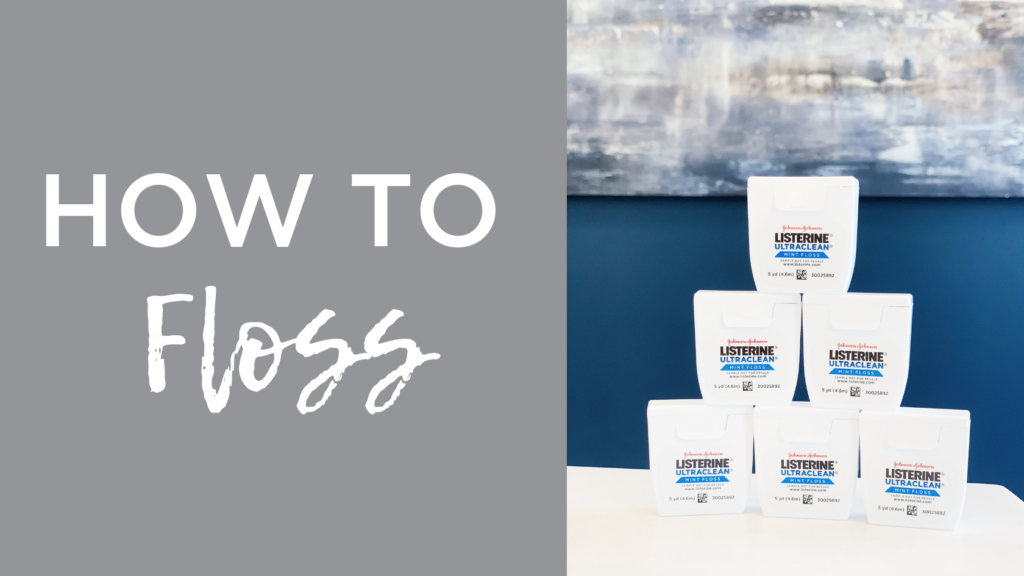How to Floss: A Step-By-Step Guide

There are many different ways to floss your teeth, but what exactly is the right way to do it? We’re here to cover all the bases and share what we know with you. After all, plaque is a major contributor to tooth decay and gum disease, and flossing is a great way to combat and prevent both!
Before we get into the nitty-gritty of how to floss, let’s do a quick refresher on the basics of oral health.
Oral Health 101
Everyone has natural bacteria in their mouth. This natural bacteria, combined with sugars in our foods that we consume each day, can slowly eat away at tooth structure and develop into plaque when left undisturbed. Plaque that is not removed from your teeth can harden to tartar. Tartar is a hard mineral deposit and can only be removed by professionals. The presence of tartar in your mouth can lead to gingivitis, an early stage of gum disease. The American Dental Association (ADA) recommends brushing for two minutes twice a day with a fluoride toothpaste, cleaning between teeth once a day with floss, and regular dental visits at least every 6 months.
Prevention is key when it comes to oral health, and flossing regularly (the right way!) is one of the best preventive habits you can develop!
how to floss:
- Start with about 18 inches of floss and wind around both middle fingers (don’t be afraid to use too much, longer is better than shorter!), leaving a few inches in the middle.
- Hold the floss between your thumbs and index fingers, and gently slide it up and down between all teeth in a “C” shape around the tooth as far down as you can go.
- Curve the floss (gently) around the base of each tooth, ensuring to go beneath the gumline, and use clean sections of the floss as you move from tooth to tooth. Don’t forget to floss behind the farthest teeth in the back, too!
- Floss under the gumline to ensure all bacteria (even the hidden stuff!) gets cleaned from your teeth.
- When shopping for floss, look for the ADA Seal of Acceptance on any products you use to ensure it has been tested for safety.
- Waxed vs unwaxed floss is up to your personal preference– at River Run Dental, we prefer waxed floss due to its easy ability to glide between teeth.
Still have questions about flossing?
Comment below with any questions you might still have about flossing. As one of the Top Dentists in Richmond, VA, we are happy to answer any questions you may have!
